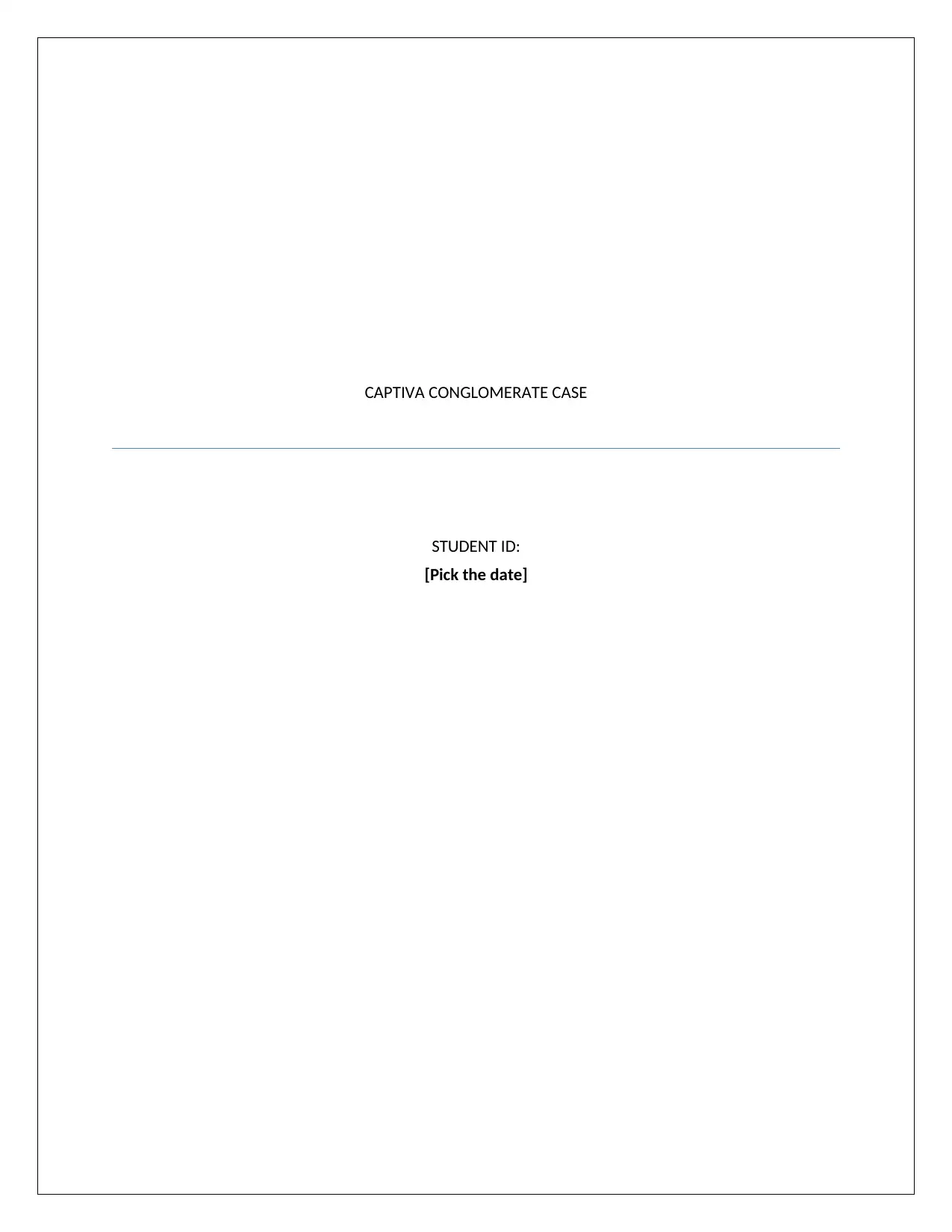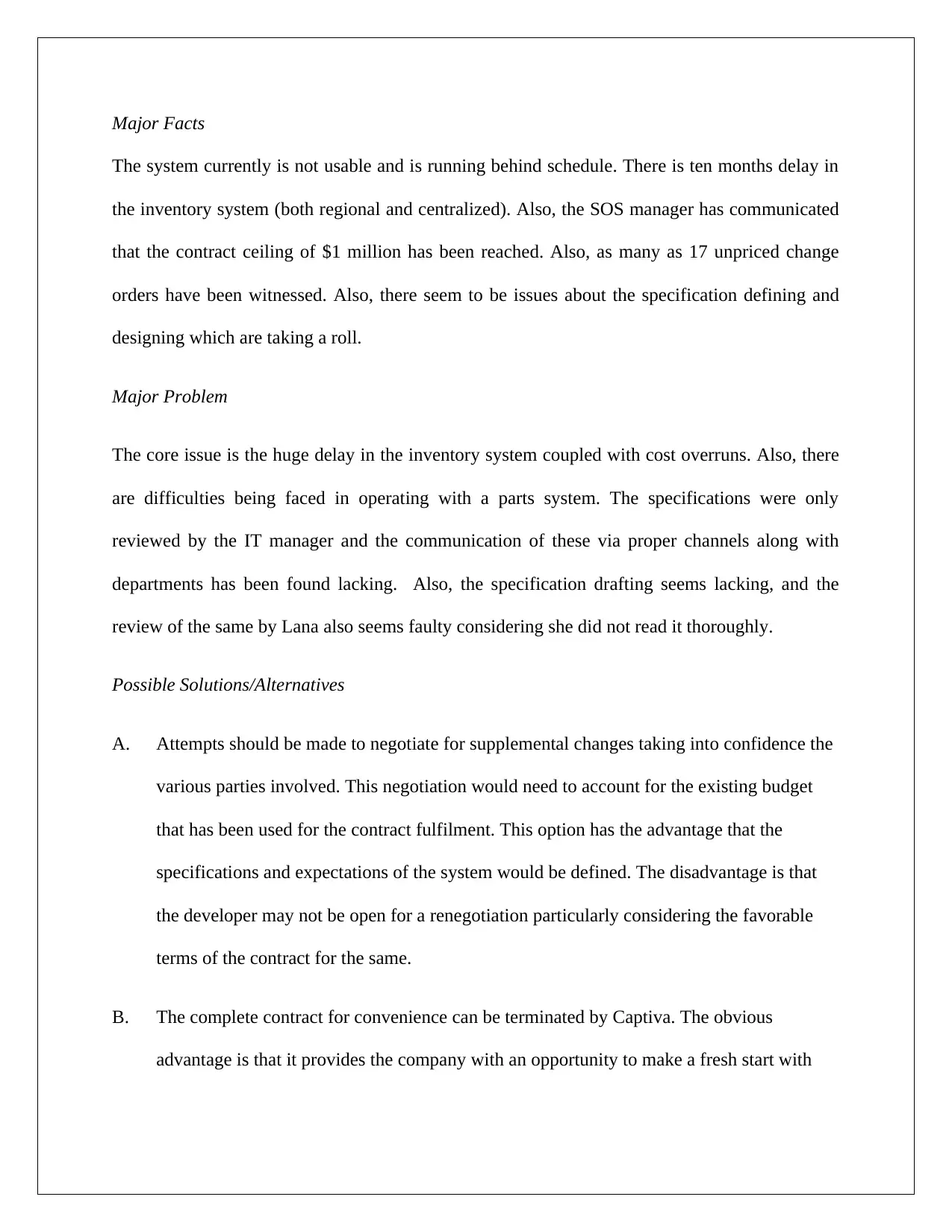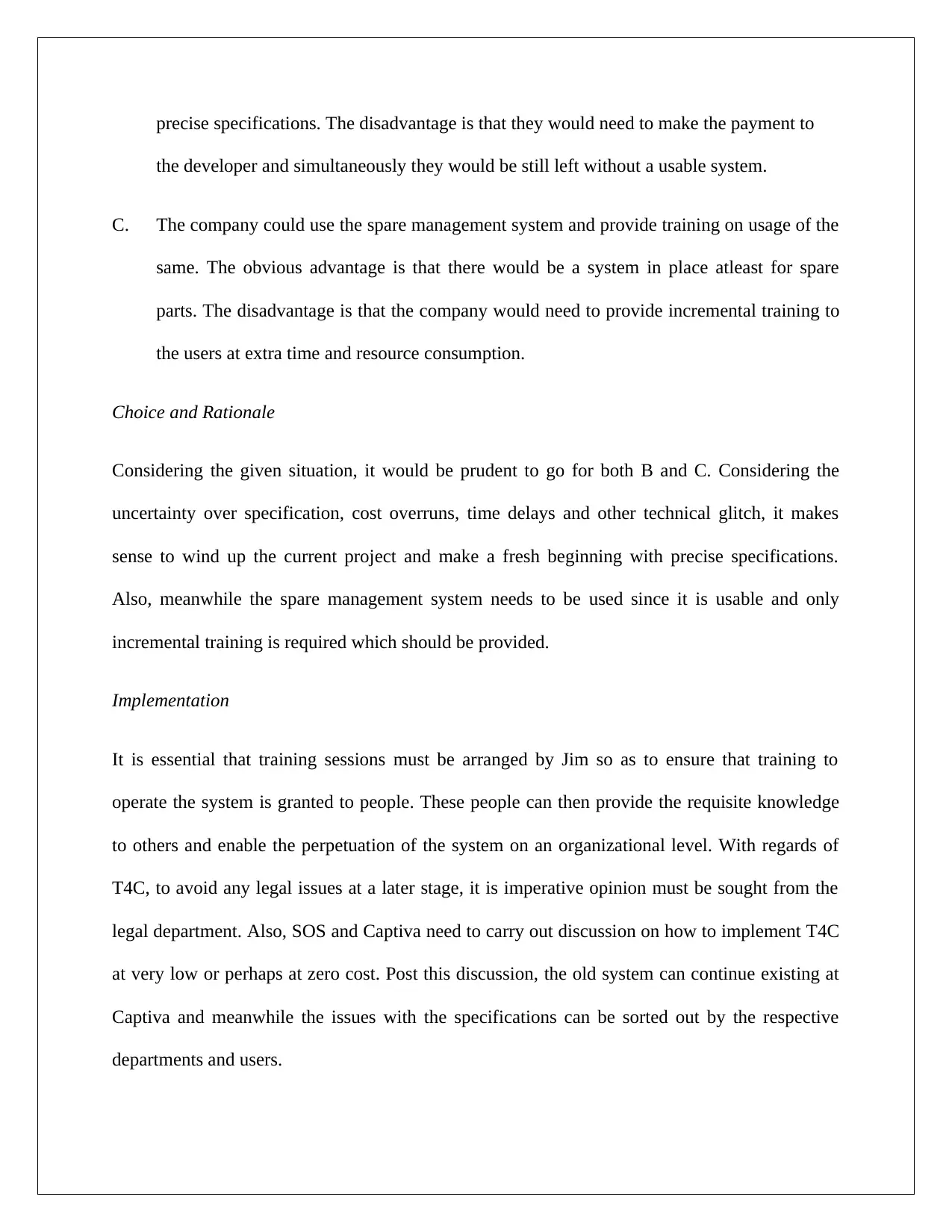Case Study: Captiva Conglomerate System Analysis and Solutions
VerifiedAdded on 2020/03/16
|3
|579
|44
Case Study
AI Summary
This case study analyzes the problems faced by Captiva Conglomerate, including significant delays in the inventory system, cost overruns, and issues with the system's specifications. The major problem identified is the delay in the inventory system coupled with cost overruns. The analysis examines the root causes, such as poor communication and inadequate specification drafting. Several solutions are proposed, including negotiating for supplemental changes, terminating the existing contract, and utilizing a spare management system. The recommended course of action involves both terminating the contract to start fresh with clear specifications and implementing the spare management system while providing necessary training. The implementation strategy focuses on training sessions for users to ensure system operation and seeking legal advice regarding contract termination. Additionally, the analysis suggests discussions between SOS and Captiva on implementing contract termination at minimal cost. The old system will continue to function at Captiva while the specifications are refined.
1 out of 3










![[object Object]](/_next/static/media/star-bottom.7253800d.svg)